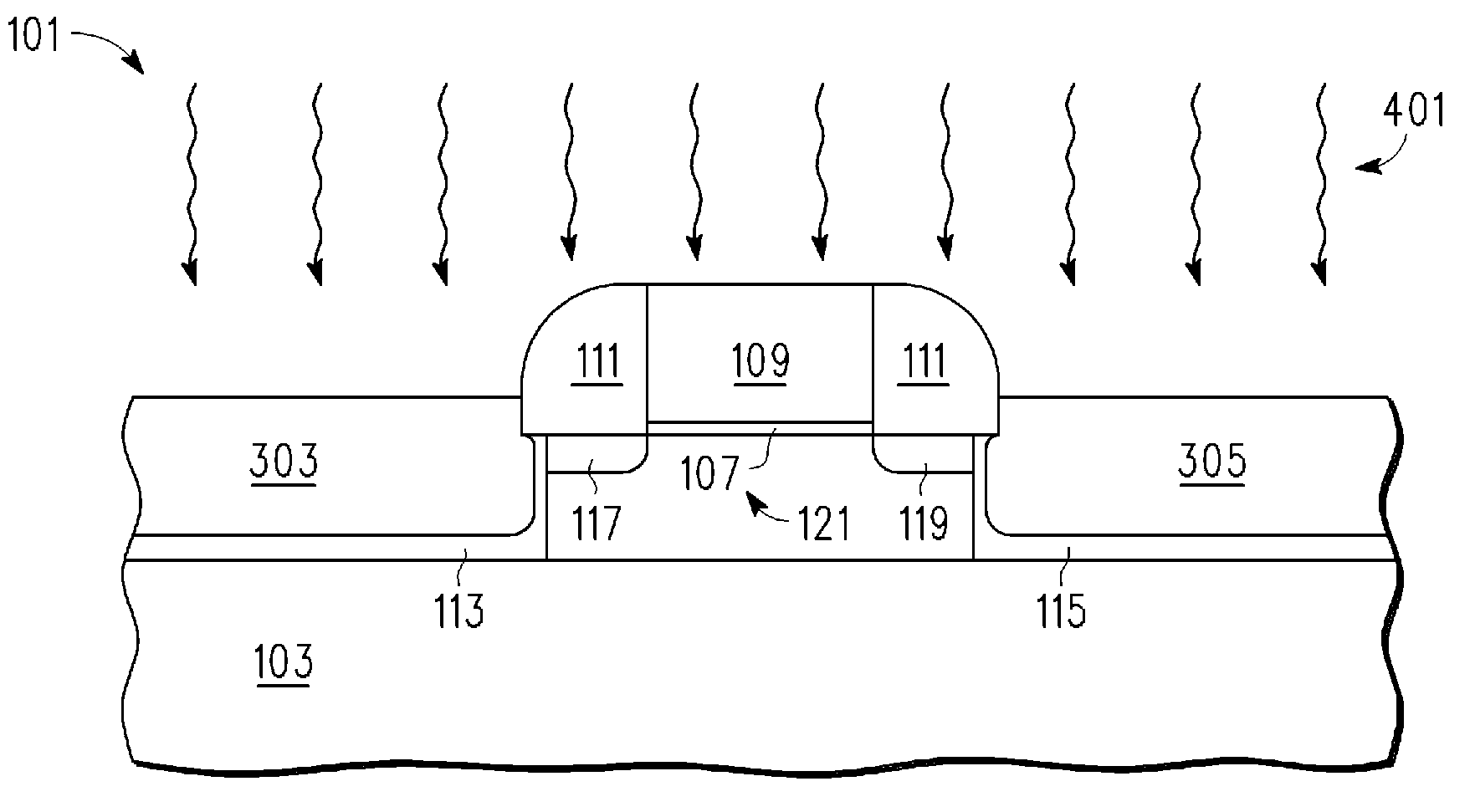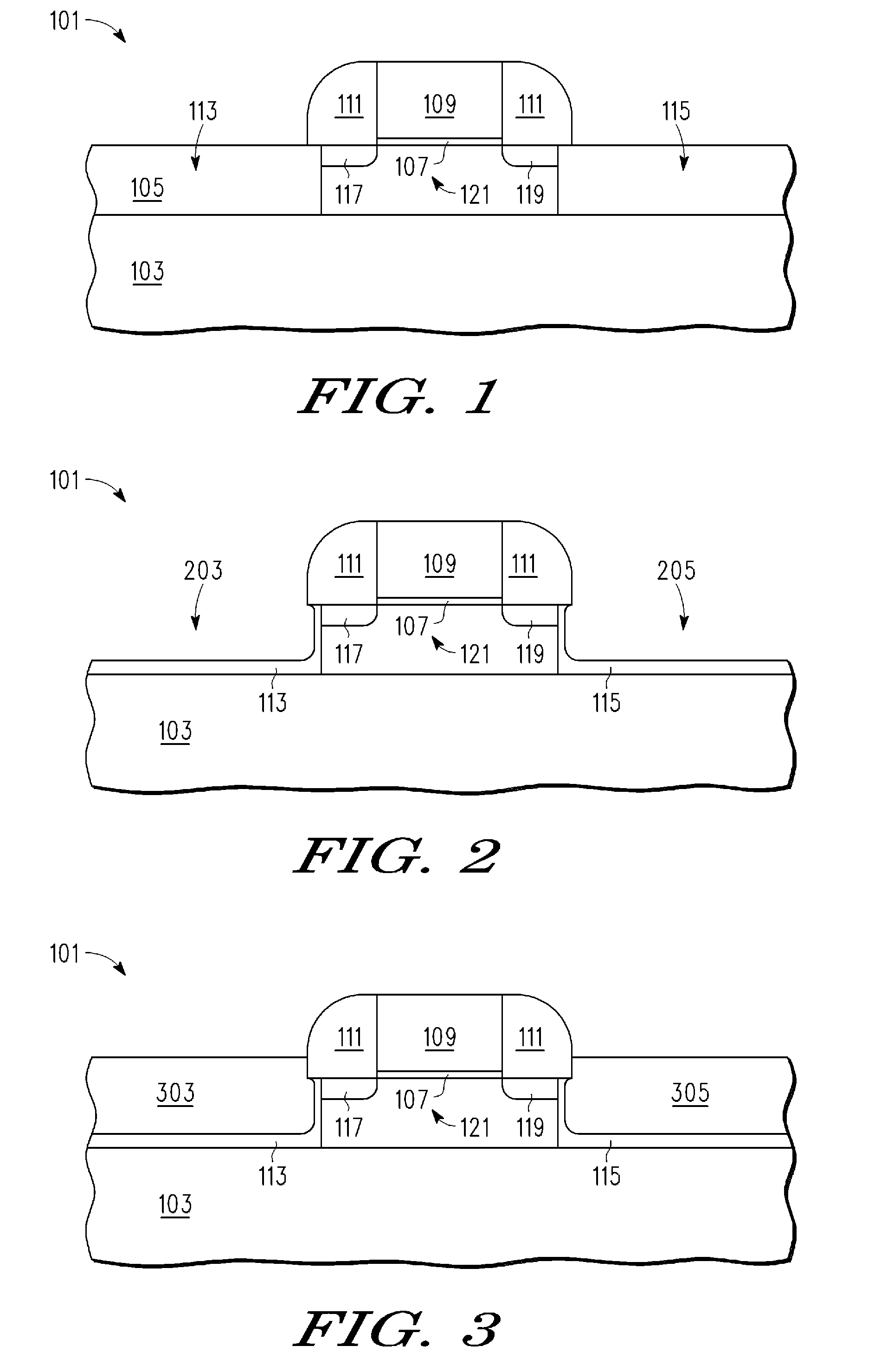Anneal of epitaxial layer in a semiconductor device
a semiconductor and epitaxial layer technology, applied in the direction of polycrystalline material growth, crystal growth process, gel state, etc., can solve the problems of material thermal instability, carbon-doped silicon layer epitaxially grown on a silicon layer may be under stress due to lattice constant mismatch,
- Summary
- Abstract
- Description
- Claims
- Application Information
AI Technical Summary
Benefits of technology
Problems solved by technology
Method used
Image
Examples
Embodiment Construction
[0013]The following sets forth a detailed description of a mode for carrying out the invention. The description is intended to be illustrative of the invention and should not be taken to be limiting.
[0014]FIG. 1 is a cutaway side view of one embodiment of a semiconductor device at one stage of its manufacture according to one embodiment of the present invention. Wafer 101 has a semiconductor on insulator (SOI) configuration that includes a semiconductor layer 105 (e.g. silicon) located on insulator layer 103. In one embodiment, layer 103 would be located on a bulk silicon substrate layer (not shown). Layer 105 has been implanted with dopants to form channel region 121 and lightly doped source / drain implant regions 117 and 119 and heavily doped source / drain implant regions 113 and 115. A gate 109 (e.g. polysilicon, metal) is formed over a gate dielectric 107 (e.g. SiO2 or metal oxides such as hafnium or zirconium based). A dielectric gate spacer 111 is formed adjacent to gate 109. In...
PUM
| Property | Measurement | Unit |
|---|---|---|
| temperature | aaaaa | aaaaa |
| lattice spacing | aaaaa | aaaaa |
| lattice spacing | aaaaa | aaaaa |
Abstract
Description
Claims
Application Information
 Login to View More
Login to View More - R&D
- Intellectual Property
- Life Sciences
- Materials
- Tech Scout
- Unparalleled Data Quality
- Higher Quality Content
- 60% Fewer Hallucinations
Browse by: Latest US Patents, China's latest patents, Technical Efficacy Thesaurus, Application Domain, Technology Topic, Popular Technical Reports.
© 2025 PatSnap. All rights reserved.Legal|Privacy policy|Modern Slavery Act Transparency Statement|Sitemap|About US| Contact US: help@patsnap.com



